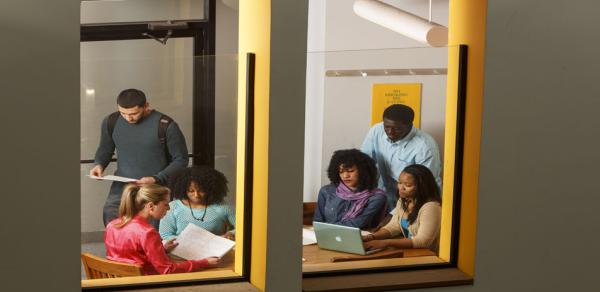Getting Started with Accessibility
The College of Staten Island and the City University of New York (CUNY) is committed to providing students, faculty, staff, and the general public with the technology and information they need, and to making these resources accessible to all, in accordance with CUNY’s Policy on Equal Opportunity and Non-Discrimination and applicable law. But what does that mean for you? What do you need to know?
What is accessible technology?
Accessible technology is technology that has been designed in a way so that it can be accessed by all users. This includes electronic documents, websites, software, hardware, video, audio, and other technologies. People who interact with technology are extremely diverse. They have a wide variety of characteristics, and we cannot assume that they’re all using a traditional monitor for output, or keyboard and mouse for input.
Consider these users:
- Most individuals who are blind use either audible output (products called screen readers that read web content using synthesized speech), or tactile output (a refreshable Braille device).
- Individuals with learning disabilities such as dyslexia may also use audible output. This is often referred to as Text-to-Speech (TTS).
- Individuals with low vision may use screen magnification software that allows them to zoom into a portion of the visual screen.
- Many others with less-than-perfect eyesight may enlarge the font on websites using standard browser functions, such as Ctrl + in Windows or Command + in Mac OS X.
- Individuals with fine motor impairments may be unable to use a mouse, and instead rely exclusively on keyboard commands, or use assistive technologies such as speech recognition, head pointers, mouth sticks, or eye-gaze tracking systems.
- Individuals who are deaf or hard of hearing are unable to access audio content, so video needs to be captioned and audio needs be transcribed.
- Individuals may be using mobile devices including phones, tablets, or other devices, which means they’re using a variety of screen sizes and a variety of gestures or other user interfaces for interacting with their devices and accessing content.
Accessible technology works for all of these users, and countless others not mentioned.
The World Wide Web Consortium (W3C) summarizes web accessibility nicely in their Web Content Accessibility Guidelines 2.1 (WCAG). WCAG 2.1 is organized into the following four key concepts:
- Web content must be perceivable
- Web content must be operable
- Web content must be understandable
- Web content must be robust
Although written specifically for web content, these principles apply to other technologies as well. There are many possible approaches to attaining accessibility as defined by these four concepts.
How do I make my technology accessible?
This webpage provides a growing number of how-to pages with step-by-step guides for making particular types of content accessible. To learn more about accessibility of particular technologies, consult the pages that are most relevant for the technologies you’re using or are especially concerned about.
Resources for making content accessible
- Website
- Word
- Excel
- PowerPoint
- Video (Captioning)
- InDesign
Where do I get help?
The College of Staten Island has an Office of Disability Services along with the Office of Information Technology Services that can help with specific technology needed to ensure compliance.
The Office of Information Technology Services will be offering training to help you learn how to build accessible web content.



